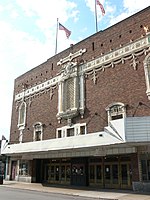Babes of Carytown

Babes of Carytown is an LGBTQ friendly bar, founded in 1979 as a lesbian bar, and located in Richmond, Virginia. It is known for its beach volleyball court, live music, and drag shows. It is Richmond's only lesbian-focused bar, and one of fewer than twenty remaining in the country.From 2011 through 2016, it was the first place Reader's Pick in Style Weekly for Best Gay Bar. In 2017, Babes was inducted into the Style Weekly Hall of Fame. It then tied for first place as the Style Weekly Reader's Pick in 2018, and then was the first place Reader's pick from 2019 through 2021.In 2017, it was selected by Thrillist as Virginia's best dive bar and in 2022 was recognized by Tasting Table as among the best LGBTQ bars in the nation.In a 2017 report prepared for the Virginia Department of Historic Resources LGBTQ Heritage Working Group, Babes is described as "a rare survivor from the pre-1991 period, during which the Virginia Alcoholic Beverage Control Board regularly shut down establishments that served or employed LGBTQ individuals."
Excerpt from the Wikipedia article Babes of Carytown (License: CC BY-SA 3.0, Authors, Images).Babes of Carytown
West Cary Street, Richmond Museum District
Geographical coordinates (GPS) Address Phone number Website External links Nearby Places Show on map
Geographical coordinates (GPS)
| Latitude | Longitude |
|---|---|
| N 37.55387 ° | E -77.48236 ° |
Address
Babe's of Carytown
West Cary Street 3166
23221 Richmond, Museum District
Virginia, United States
Open on Google Maps










